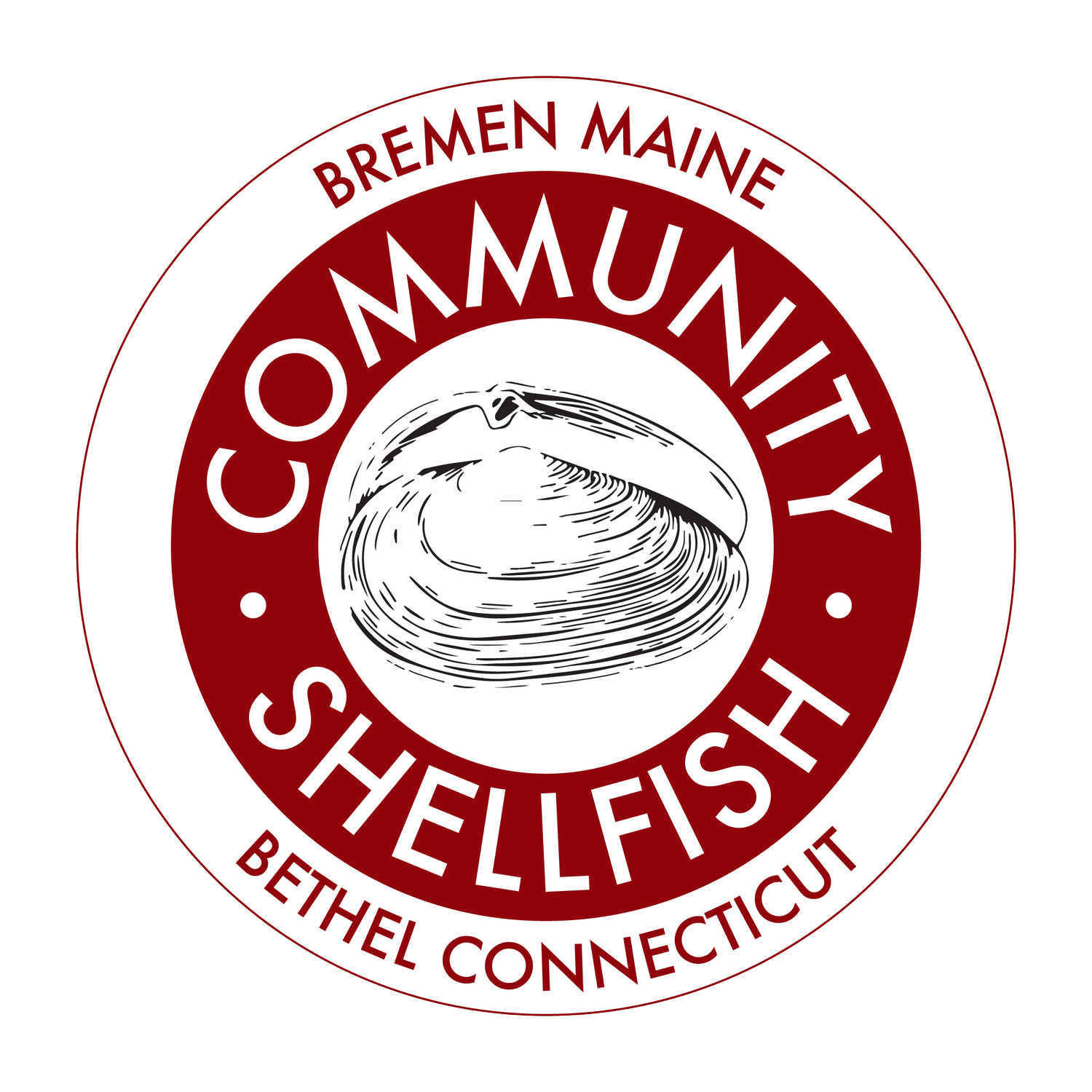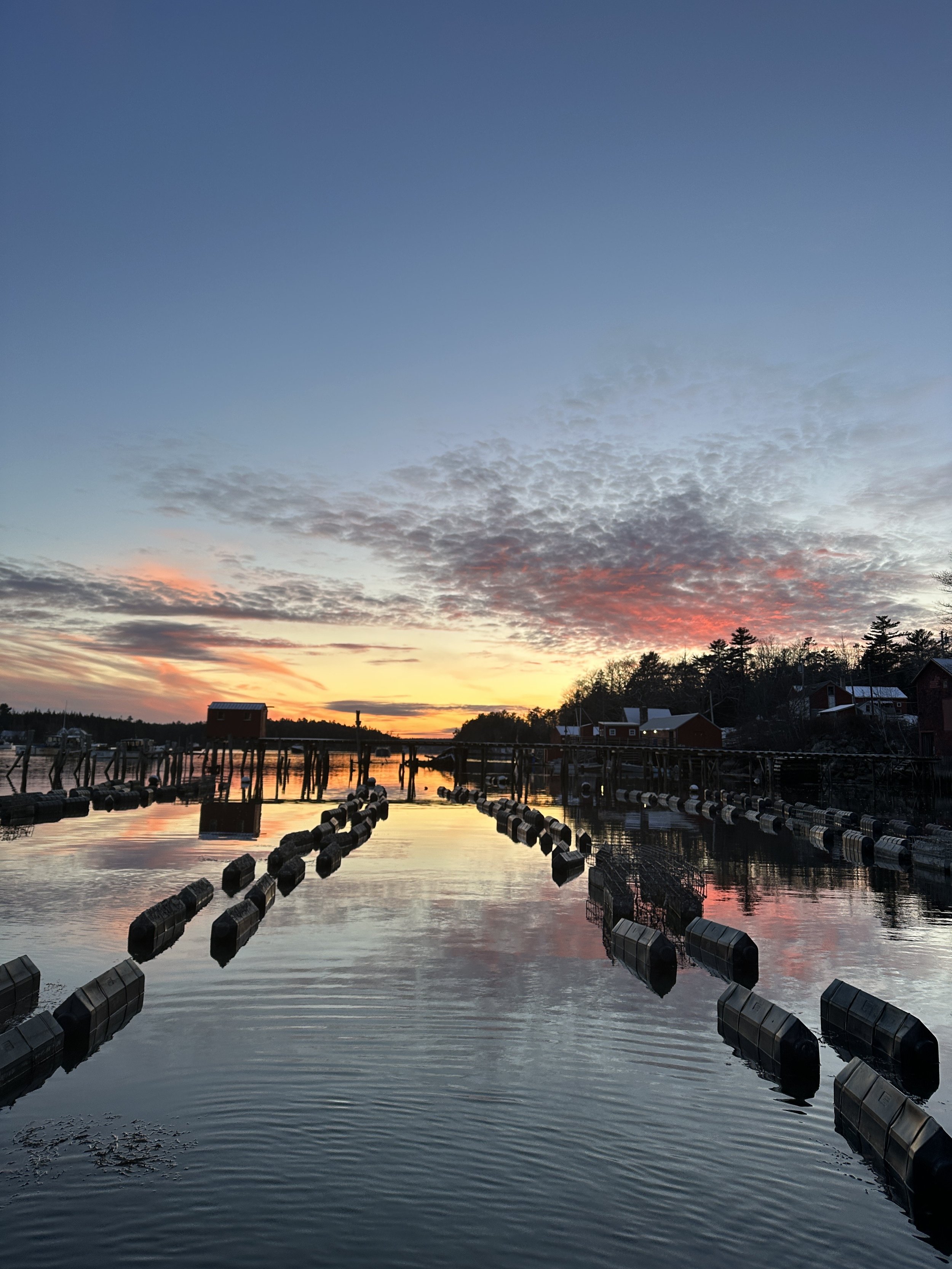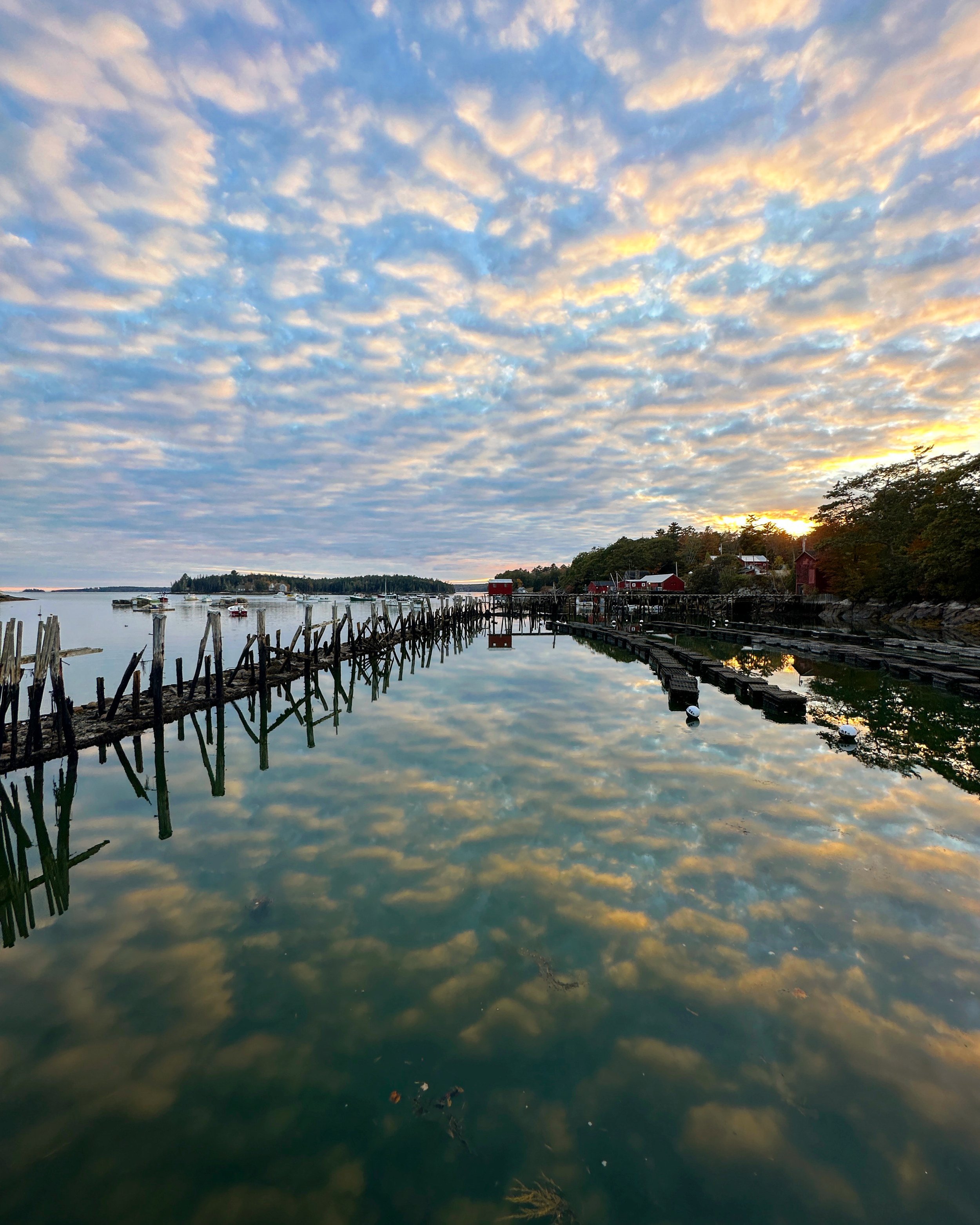Aquaculture at Community Shellfish
Growing Oysters for the Future
In 2017, we began an intensive aquaculture program in the waters surrounding our shore facility in Bremen Maine. Experimenting with a few types of bivalves it quickly became clear that oysters were going to grow especially well. Since then, growth has been exceptional, the location and its infrastructure have allowed us to rapidly expand our operation.
Traditionally cage grown oyster and a bottom planted oyster, different culture methods, both delicious.
Inspecting the oyster seed growth.
So how does it work…?
Our oysters are grown primarily through a process known in the industry as top or surface-culture. This is a process that keeps the oysters afloat in the water column, giving them the best access to the food that the Medomak River and Atlantic Ocean have to offer, allowing them to grow more quickly than they would in the wild.
Additionally, we are experimenting with bottom culture methods. This method is a hands off approach as we grow oysters to approximately 2 inches in length and then ‘plant’ evenly onto the ocean floor. We leave them to grow until they are harvested via scuba diving. This creates two distinct oysters in both look and taste, bringing you more diversity in flavor!
Due to our proximity to the Atlantic Ocean our oysters benefit from fresh sea water with each incoming tide. This inflow of nutrients, coupled with the rich food supply of the Medomak River and Muscongus Bay, gives our oysters access to a host of nutrients that is unique in the aquaculture industry. This gives our oysters a strong briny flavor and a sweet finish, making them truly one of a kind!
One interesting aspect to our program is the use of the “Grandfathered” Lobster Pound Enclosures. These are partitioned areas where lobsters were once stored for purposes of market timing. This practice is no longer employed, so the pounds offer an excellent opportunity to create a controlled environment in the open ocean. At each low tide, the pounds hold a few feet of water which is in turn warmed by the sun promoting algae growth. This increased algae production provides extra food for the oysters twice a day.
Location is everything. Merroir, the marine version of terroir, is the characteristic taste and flavor imparted to an oyster by the environment in which it is produced.
Southern View of one of the Lobster Pound with oyster cages.
Empirical Proof
““... Salinity and chlorophyll were higher in the lobster pound than and area known for productive oyster aquaculture in the Damariscotta River Estuary...”








